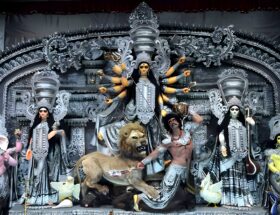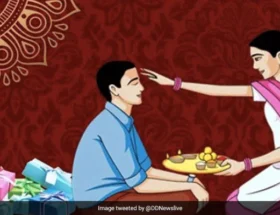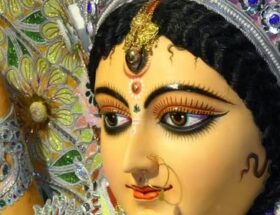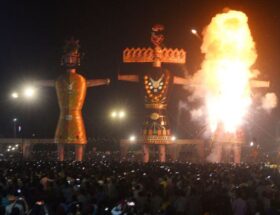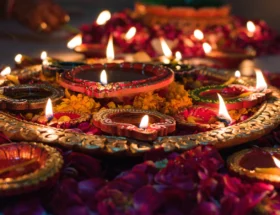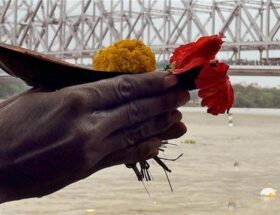Experience Zatra at Cansaulim—Cultural Richness Like Never Before.
Introduction to Zatra at Cansaulim
Zatra at Cansaulim Festival is one of the significant events in Goa’s social and cultural calendar. The small village of Cansaulim comes alive during this annual event, which is a potpourri of religious emotion, artistic expression, and community bonding. The enthusiasm of locals participating in this traditional Goan festival is quite infectious, and tourists find this experience unique. The locals celebrate one of the area’s largest festivals with great zeal and is visited by many who wish to get a feel of the special traditions of the place.
The Significance of Zatra in Goan Culture
The term “Zatra” denotes a religious pilgrimage or festival celebrated in Goa, and as such, it is closely associated with the Hindu traditions of the state. One of these Zatras, at Cansaulim, is in honour of the local deity, Shree Shantadurga, and is a display of communal amity and devotion. This festival holds a special place in the hearts of people and is symbolic of rich cultural heritage in Goa.
Rituals and Celebrations at Zatra
The Zatra of Cansaulim commences with the procession of the presiding deity, Shree Shantadurga, mounted on a gorgeously decorated palanquin. Crowds of huge numbers of devotees congregate here to offer puja and join the rituals. Traditional music which is resounding sets the atmosphere, in which the spiritual feeling drenches. Further, folk dance and folk music, in which the ample artistic traditions rooted in this region are showcased, enliven the festivity.
A Fusion of Tradition and Festivity
Though Zatra at Cansaulim is a religious occasion, it is one of celebration and fun. The festival brings people from all walks of life together and installs a sense of unity and connection. Local specialties and heaps of handicraft souvenirs line the streets of Kansoulim in a festive atmosphere. The ambiance is pulsating with the smell of traditional Goan food to make the Zatra a feast for the senses.
Community Involvement and Participation
The most striking feature of Zatra at Cansaulim must perhaps be the actual involvement of the social community. Every year, the villagers come together to organize the event, ensuring that they perfectly plan everything. From the decoration of this temple to food for the devotees, one can visualize their participation in every bit of preparation. This strong sense of community enhances the meaning of a festival, where the celebration emerges as a collective experience.
The Spiritual Journey– Zatra at Cansaulim Festival
To many visitors, Zatra at Cansaulim is not a festival but a pilgrimage. undefinedThus, it is the deeper element of the festival that makes this celebration an intense experience for all in its surroundings.
Preservation of Culture Through Zatra
The Zatra at Cansaulim is an annual cultural extravaganza of tremendous significance for the preservation and promotion of Goan culture. It reminds one of the rich cultural heritage of the land at a time when modernization is fast changing the region’s cultural traditions. This festival exposes the young generation to the age-old customs and traditions that were handed down through the ages. Cultural preservations thus become necessary to hold on to this uniqueness that is Goa.
Conclusion
Zatra stands for much more than a festival and represents life itself, the throbs of culture, and the reverberations of spirituality. It is an excellent opportunity to immerse yourself in Goan traditions and get a feel for the vibrant Goan spirit. This is an experience that is sure to last for both the locals and the visitors. The rich cultural heritage of Goa will never fall into ruins at any point in time; rather, it stands unscathed and vibrant to be beheld, experienced, and felt in the heart—such is Zatra at Cansaulim.
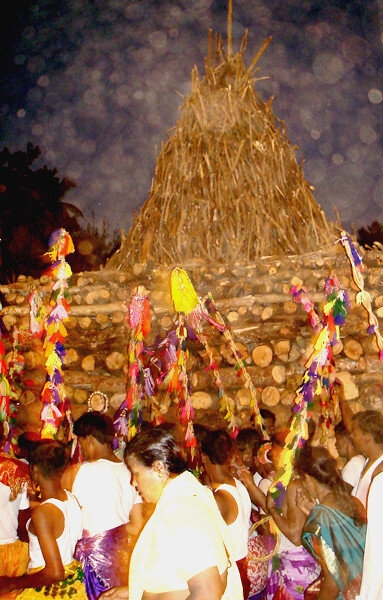
Sarees that women can wear in this festival: Off-White Garad Banarasi Silk Saree – Poridheo
Frequently Asked Questions about Zatra at Cansaulim
1. What is Zatra at Cansaulim?
Jatra in Chansaulim: Jatra is a religious and socio-cultural festival held annually in Chansaulim, Goa. It is dedicated to the local deity Shri Shanta Durga. Traditional ceremonies, community events, and folk songs are part of this joyous celebration.
2. When do people celebrate Zatra at Cansaulim?
They usually hold Zatra at Cansaulim in January or February according to the Hindu lunar calendar.
3. Where do they hold Zatra at Cansaulim?
The village of Cansaulim in South Goa holds the festival, with its main temple center at Shree Shantadurga.
4. What are the primary rituals that people perform during Zatra at Cansaulim?
Primary rituals include the procession of the deity Shree Shantadurga mounted on a palanquin, accompanied by prayers, offerings, and traditional music performed by local artists.
5. Is the Zatra at Cansaulim open to tourists?
Yes, visitors can take part in the Zatra at Cansaulim. This event actively showcases Goan culture and religious practices through various activities.
6. What will I see during Zatra at Cansaulim?
The festival highlights include vibrant processions, Goan-style folk dances, musical performances, and numerous street markets brimming with local handicrafts and foodstuffs.
7. How to reach Cansaulim for Zatra?
Cansaulim is connected by good roads to major towns like Panaji and Margao. The Dabolim Airport and Cansaulim Railway Station are also nearby.
8. What is the significance of Zatra at Cansaulim?
It is the big cultural and religious festival of the locals, exuding devotion, integration, and continuation of traditional Goan Culture.
9. Any food items or delicacies identified with Zatra at Cansaulim?
Here, you will also find a good variety of traditional Goan food, mainly sweets like “neureos” and “bebinca,” specially prepared for the occasion.
10. What should I wear to Zatra at Cansaulim?
In religious rituals, wearing decent and comfortable attire is expected. Light fabrics work fine with the warm climate of Goa. Focus KeyPhrase: Zatra at Cansaulim Festival.

